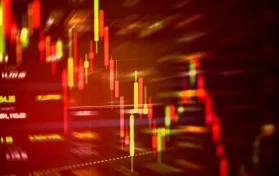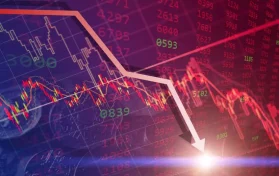
Twitter is trending the topic “white house recession” after the White House website published a press release that appears to change the definition of “recession.”
According to Forbes, the commonly accepted definition of recession was coined over four decades ago:
“In 1974, economist Julius Shiskin came up with a few rules of thumb to define a recession: The most popular was two consecutive quarters of declining GDP. A healthy economy expands over time, so two quarters in a row of contracting output suggests there are serious underlying problems, according to Shiskin. This definition of a recession became a common standard over the years.”
The release from WhiteHouse.gov says that “some” may hold that a recession can be declared after the two consecutive quarters of falling GDP, “that is (not) the official definition.” In response, both political pundits and conservative economic experts have ripped the White House statement.
Rep. Lauren Boebert (R-CO) tweeted, “If we weren’t in a recession, the White House wouldn’t be redefining ‘recession’ on their website.” Rep. Andy Biggs (R-AZ) also tweeted, “Soviet-style propaganda from the Biden White House.” Countless others, including Donald Trump, Jr. and Rep. Darrell Issa (R-CA), also tweeted comments regarding the statement.
When questioned about the post, White House Press Secretary Karine Jean-Pierre remarked that Americans are seeing “the strength” of both the labor market and the economy.
Most critics of the recession definition change-up postulate that the Biden Administration must be anticipating negative numbers in the upcoming GDP report (expected later this week).
Janet Yellen appeared on a Sunday news program; she acknowledged that America is in the midst of an economic slowdown, but she was reluctant to say that we are headed into a recession.
Currently, the inflation rate in the United States is 9.1 percent. This number has climbed steadily since Biden took office in January 2021. Supply chain issues, increased demand, and the reopening of the economy have all had an effect on the inflation rate. Gas prices have more than doubled since January 2021, and groceries have steadily risen in price as well. Americans are paying thousands more each year for necessities. Yet, prior to the last recession in 2008, the inflation rate was a mere three percent.
Yellen told NBC anchors on “Meet the Press” that the economy is not “in a recession,” but that the American economy is in “a period of transmission” and “growth is slowing.”
Yellen also touted the labor market. One area in which the economy is successful is the jobs market, which is showing steady growth. At the end of May, there were 11.3 million jobs open. There are 5.9 million unemployed people, which puts the American unemployment rate at 3.6 percent. This rate has held steady for the last three months.
The spokesperson for the Republican National Committee, Will O’Grady, said that Biden has “turned a recovery into a likely recession.” O’Grady pointed to $1.9 trillion in spending as the primary reason for American economic woes.
Ironically, media outlets such as The Washington Post and Business Insider have joined more conservative outlets in chiding the White House’s blog post. The Post called the blog post a “preemptive pushback” on the numbers likely to come out this week, while Business Insider states that the White House is making a case against using the term recession to describe the report’s findings.
Axios says that the Commerce Department is likely to release numbers showing a “soft” growth rate, while the Atlanta Fed predicts the numbers for Quarter 2 will show -1.6 percent. In April, the report showed a negative growth rate of -1.6 percent as well.
Goldman Sachs economist Ronnie Walker says that his firm is predicting a thirty percent change that America will plunge into a recession in the next year. Most economists share this sentiment, believing that by the end of 2023, a recession will take place.





